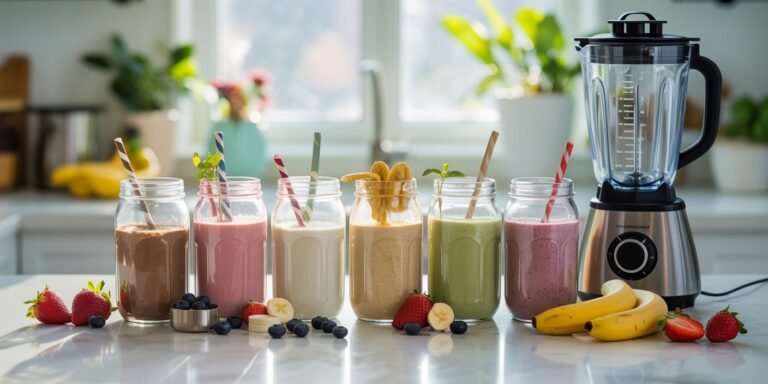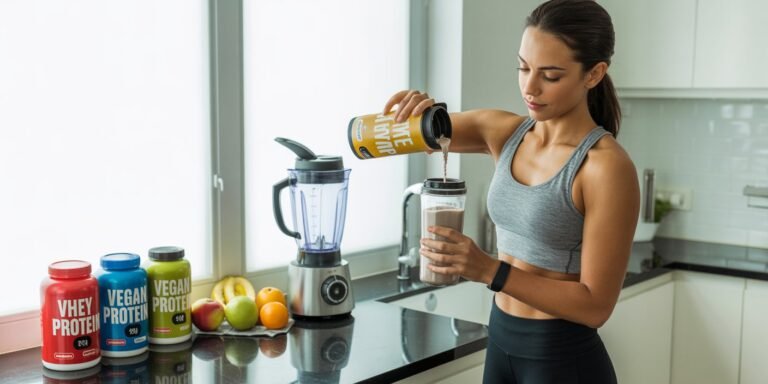When it comes to transforming your body, most people focus on the workouts—lifting heavier, running longer, or doing more cardio.
While exercise is absolutely important, the truth is what you eat will always play the biggest role in how your body looks and feels. In fact, fitness experts often say: “
You can’t out-train a bad diet.” And it’s true—if your nutrition isn’t aligned with your goals, your progress will always feel slow, frustrating, or even non-existent.
The good news? You don’t need a complicated diet plan, hours of meal prepping, or giving up all your favorite foods to see results.
Most of the time, it comes down to making small, smart adjustments—simple hacks that help you eat better, stay full longer, fuel your workouts, and support fat loss or muscle gain without feeling restricted.
These nutrition tweaks are practical, sustainable, and easy to apply to your everyday life, no matter how busy you are.
Think about it—what if you could:
- Speed up fat loss without starving yourself or cutting out entire food groups?
- Build lean muscle by eating foods that fuel recovery and growth?
- Stay energized all day long instead of dealing with mid-afternoon crashes?
- Enjoy meals guilt-free, knowing they’re actually helping your body instead of working against it?
- Create habits that last, so staying in shape feels effortless instead of like a constant uphill battle?
That’s exactly what these 12 simple nutrition hacks are designed to do. Each one is rooted in science but broken down into easy, actionable steps you can start today.
Whether you’re trying to lose weight, get stronger, or just feel healthier overall, these hacks will help you transform your body faster than you think—without the confusion of strict diets or the stress of counting every calorie.
So if you’re ready to take control of your nutrition, boost your results, and finally feel confident in your body, let’s dive into the 12 nutrition hacks that can completely change the way you look and feel.
1. Power Up Every Meal with Lean Protein
If you want to build muscle, burn fat, and keep your energy levels stable, lean protein should be the foundation of every meal.
Protein is the building block of muscles, enzymes, and hormones, and it plays a critical role in recovery, satiety, and metabolism.
Unlike carbs, which can cause quick energy spikes and crashes, or fats, which digest slowly, protein provides a steady release of energy while helping you stay full for hours.
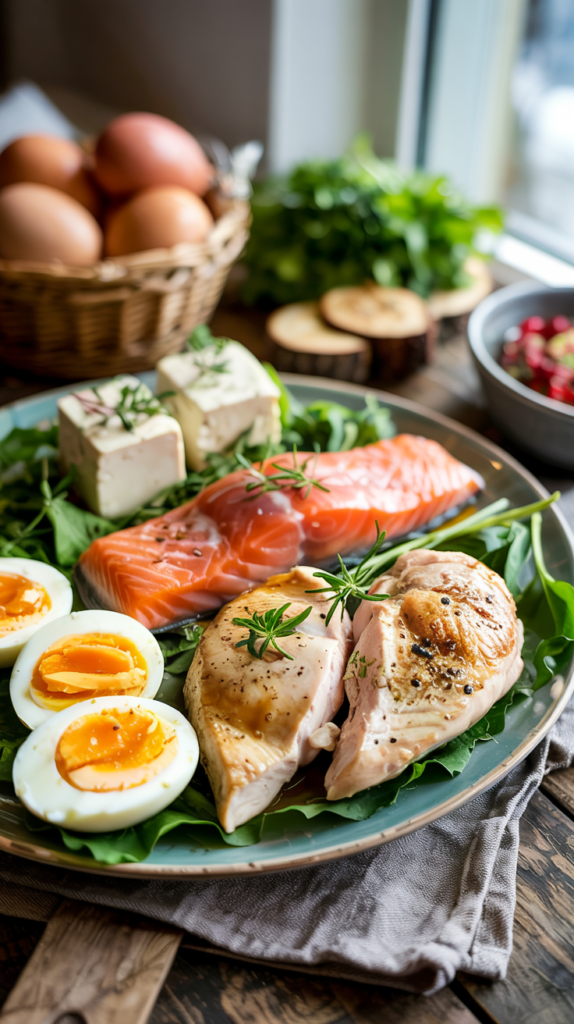
Why Lean Protein Matters
- Supports Muscle Growth & Repair: Protein provides the amino acids your body needs to repair muscles after workouts and build new muscle tissue.
- Keeps You Full Longer: Protein triggers satiety hormones like peptide YY and GLP-1, which reduce hunger cravings and help with weight management.
- Boosts Metabolism: The thermic effect of protein is higher than carbs or fats, meaning your body burns more calories digesting and processing it.
- Stabilizes Blood Sugar: Adding protein to meals slows down the absorption of carbs, reducing spikes and crashes in blood sugar levels.
- Preserves Lean Mass During Fat Loss: If you’re cutting calories to lose weight, adequate protein ensures you lose fat, not muscle.
Best Sources of Lean Protein
- Animal-Based Options:
- Skinless chicken breast
- Turkey breast
- White fish (cod, tilapia, haddock)
- Salmon (rich in omega-3s, slightly higher in fat but still healthy)
- Egg whites or whole eggs (in moderation)
- Low-fat Greek yogurt or cottage cheese
- Plant-Based Options:
- Lentils, chickpeas, black beans
- Quinoa (a complete protein with all 9 essential amino acids)
- Tofu and tempeh
- Edamame
- Seitan
- Vegan protein powders (pea, rice, hemp, soy blends)
How to Add Lean Protein to Every Meal
- Breakfast: Start your day with eggs, a protein smoothie, or Greek yogurt with fruit.
- Lunch: Build your plate around chicken, turkey, tofu, or beans paired with whole grains and vegetables.
- Dinner: Include fish, lean beef, or lentils as your main entrée with healthy sides.
- Snacks: Keep protein-rich snacks handy like jerky, cottage cheese, protein bars, or roasted chickpeas.
Pro Tips for Success
- Aim for 20–30g of protein per meal (depending on your body weight and goals).
- Mix sources for better nutrient diversity (e.g., beans + quinoa, chicken + veggies).
- Prep in advance: Cook extra protein sources in bulk (like grilled chicken or baked tofu) for easy grab-and-go meals.
By powering up every meal with lean protein, you’ll feel fuller, recover faster from workouts, and build a stronger, leaner body while keeping cravings in check.
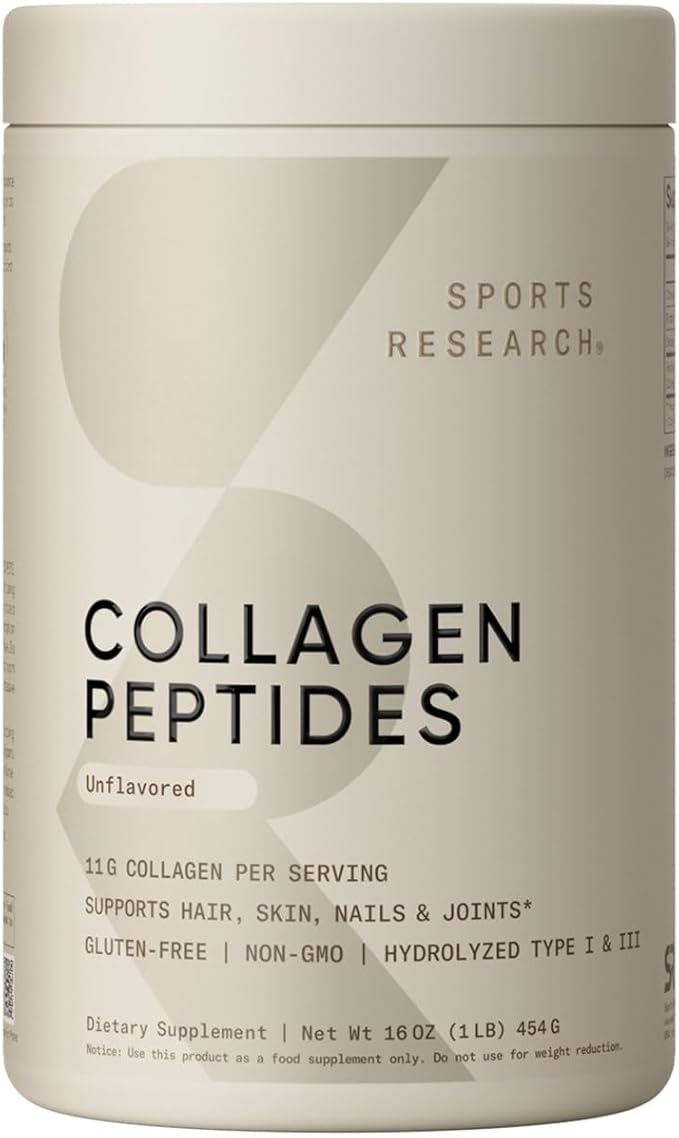
2. Start Every Morning with Hydration First
One of the simplest yet most powerful habits you can build for better health, energy, and weight management is starting your morning with proper hydration. After 7–8 hours of sleep, your body is naturally dehydrated. This means your cells, muscles, and even your brain are craving water before anything else—yes, even before your morning coffee. By rehydrating first thing in the morning, you not only restore fluid balance but also set the tone for improved digestion, metabolism, and focus throughout the day.

Why Morning Hydration Matters
- Replenishes Lost Fluids: Your body loses water overnight through breathing, sweating, and basic metabolic functions. A glass or two of water in the morning helps restore balance immediately.
- Boosts Metabolism: Drinking water first thing can jumpstart your metabolism by up to 30% for a short period, making it a natural fat-burning kickstart.
- Flushes Toxins: Overnight, your body goes into repair and detox mode. Morning hydration helps your kidneys and liver eliminate waste more effectively.
- Supports Brain Function: Even mild dehydration can cause brain fog, headaches, and low energy. Hydration fuels better focus, alertness, and productivity.
- Prepares Digestion: Water in the morning “wakes up” your digestive system, preparing it to break down food more efficiently when you eat breakfast or your first meal.
Best Ways to Hydrate in the Morning
- Plain Water First: Start with 1–2 glasses of room temperature water before anything else.
- Add Lemon: A squeeze of fresh lemon adds vitamin C, aids digestion, and gives a refreshing flavor.
- Try Warm Water: Some people find warm water soothing and gentler on the stomach first thing.
- Electrolytes (Optional): If you sweat a lot at night or wake up feeling sluggish, adding a pinch of sea salt or an electrolyte powder can help restore minerals.
- Delay Coffee or Tea: Wait at least 20–30 minutes after water before caffeine. This ensures hydration kicks in first and prevents caffeine from amplifying dehydration.
Pro Tip:
Keep a glass or bottle of water by your bed so it’s the first thing you see when you wake up. Making hydration automatic will turn it into a long-term health habit.
Starting your day with hydration may seem small, but it has a big impact on energy, fat loss, digestion, and overall performance.
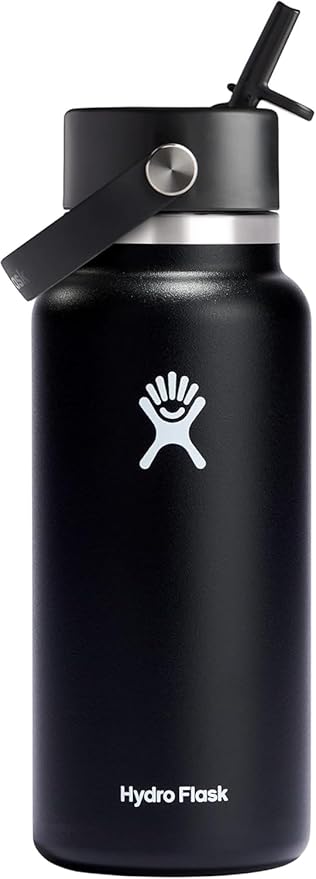
3. Stick to Whole, Natural Foods 90% of the Time
When it comes to building a lean, strong body and maintaining overall health, one of the most effective rules you can follow is the 90/10 approach: eat whole, natural foods 90% of the time, and allow yourself some flexibility the other 10%.
This balance ensures that your body gets the nutrients it needs while also giving you room to enjoy life without feeling restricted.
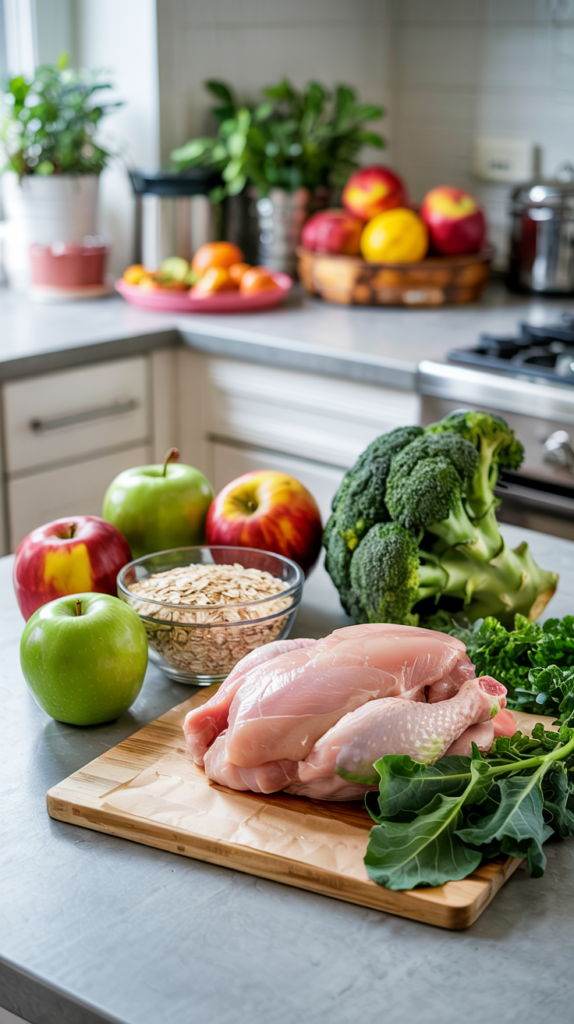
Why Whole Foods Should Be Your Foundation
Whole, unprocessed foods are rich in vitamins, minerals, fiber, antioxidants, and natural energy your body thrives on.
In contrast, ultra-processed foods are usually loaded with refined sugars, unhealthy fats, excess sodium, and chemical additives that can sabotage your goals. Sticking mostly to natural foods means:
- Better Digestion & Gut Health: Whole foods are high in fiber, keeping your digestion smooth and supporting gut bacteria.
- Stable Energy Levels: Whole foods provide slow-digesting carbs, healthy fats, and quality proteins that fuel you all day without crashes.
- Fewer Cravings: Natural foods balance blood sugar, reduce junk food cravings, and prevent binge eating.
- Nutrient Density: Every bite counts — you get more nutrition per calorie, helping you stay full and energized.
- Weight & Fat Loss Support: Whole foods naturally reduce overeating because they are more satisfying and harder to overconsume compared to processed foods.
What Counts as Whole, Natural Foods?
- Proteins: Chicken breast, salmon, tuna, turkey, eggs, tofu, lentils, chickpeas.
- Carbs: Brown rice, oats, quinoa, sweet potatoes, fruits, vegetables.
- Fats: Avocados, nuts, seeds, olive oil, fatty fish.
- Snacks: Fresh fruit, Greek yogurt, raw nuts, hummus with veggies.
Think of foods as close to their natural state as possible — the fewer ingredients, the better.
The 90/10 Rule in Action
- 90% of the time: Stick with clean, nutrient-dense meals made from scratch or minimally processed ingredients.
- 10% of the time: Enjoy flexibility — pizza with friends, dessert on a date, or your favorite snack. This keeps your diet sustainable and enjoyable.
Pro Tips to Make It Work
- Meal Prep: Cook in batches so you always have whole-food meals ready and avoid fast-food temptation.
- Shop Smart: Stick to the outer aisles of the grocery store where whole foods (produce, meat, dairy) are located.
- Watch Hidden Processed Foods: Even “healthy” protein bars or flavored yogurts can be packed with sugar. Read labels carefully.
- Don’t Strive for Perfection: It’s not about eating 100% clean all the time. Balance and sustainability are key.
By following the 90/10 rule, you’ll fuel your body with clean, nutrient-packed foods most of the time while still enjoying life’s little indulgences guilt-free. Over time, this balance will help you burn fat, stay consistent, and make your healthy lifestyle effortless.
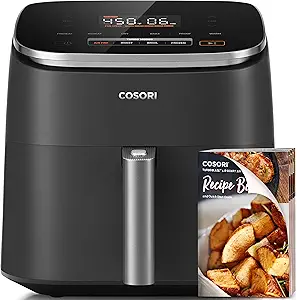
4. Front-Load Your Carbs Around Workouts
Carbs often get a bad reputation, but when it comes to building muscle, fueling workouts, and even burning fat, carbohydrates are your body’s most efficient energy source.
The key isn’t cutting carbs completely—it’s about eating them at the right time, and one of the smartest strategies is front-loading your carbs around your workouts.
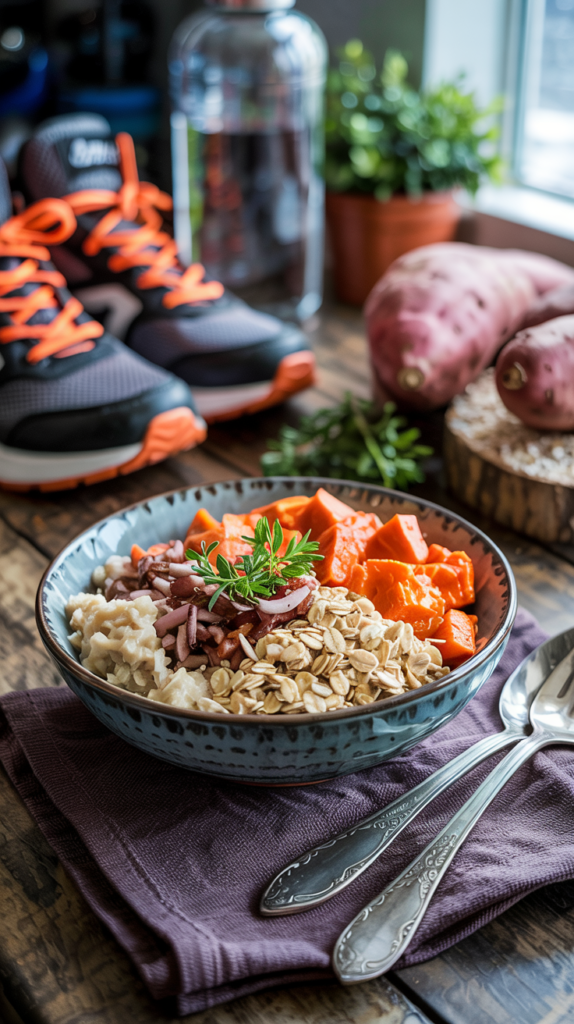
Why Carbs Around Workouts Work Best
When you train, your muscles rely heavily on glycogen, the stored form of carbohydrates in your muscles and liver. By eating carbs before and after workouts, you:
- Boost Training Performance: Carbs before workouts give your muscles quick fuel, so you can lift heavier and train harder.
- Preserve Muscle Mass: Without enough carbs, your body may break down protein (muscle) for energy.
- Faster Recovery: Post-workout carbs replenish glycogen stores, reduce fatigue, and support muscle repair.
- Better Fat Loss Results: Eating most of your carbs around workouts ensures they’re used for fuel and recovery rather than stored as fat.
How to Time Your Carbs
- Pre-Workout (60–90 mins before): Choose moderate carbs with some protein to fuel your session. Example: oatmeal with protein powder, a banana with Greek yogurt, or rice with chicken.
- Post-Workout (within 1–2 hours): Focus on fast-digesting carbs with protein to kickstart recovery. Example: a whey protein shake with fruit, rice cakes with tuna, or white rice with lean beef.
- Rest of the Day: Stick to slower-digesting carbs like quinoa, brown rice, or sweet potatoes — but keep portions moderate.
Best Carb Sources for Workout Fuel
- Pre-Workout Carbs: Bananas, oats, rice, whole grain bread, sweet potatoes.
- Post-Workout Carbs: White rice, potatoes, rice cakes, fruit, honey, or a sports drink (if training intensely).
- Everyday Carbs for Balance: Quinoa, beans, lentils, vegetables, and berries.
Tips to Make It Work
- Avoid Heavy, Greasy Foods Pre-Workout: They slow digestion and can make you sluggish.
- Pair Carbs with Protein: This combination improves recovery and keeps you fuller longer.
- Don’t Fear Evening Carbs if You Trained Late: Eating carbs after an evening workout won’t hurt fat loss — your body will use them for recovery.
- Adjust to Your Goals: If your focus is fat loss, keep carbs centered tightly around workouts. For muscle gain, spread a little more throughout the day but still emphasize workout timing.
Bottom line: By front-loading carbs around your workouts, you’ll maximize strength, speed up recovery, and avoid unnecessary fat storage. It’s not about cutting carbs — it’s about making them work for you.
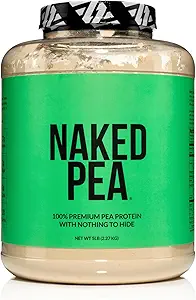
5. Shrink Your Plate Size to Slim Your Waistline
One of the simplest, yet most effective tricks for controlling calorie intake—and ultimately trimming your waistline—is to use smaller plates.
This strategy works because much of eating isn’t just about hunger, but also about visual cues, habits, and portion perception.
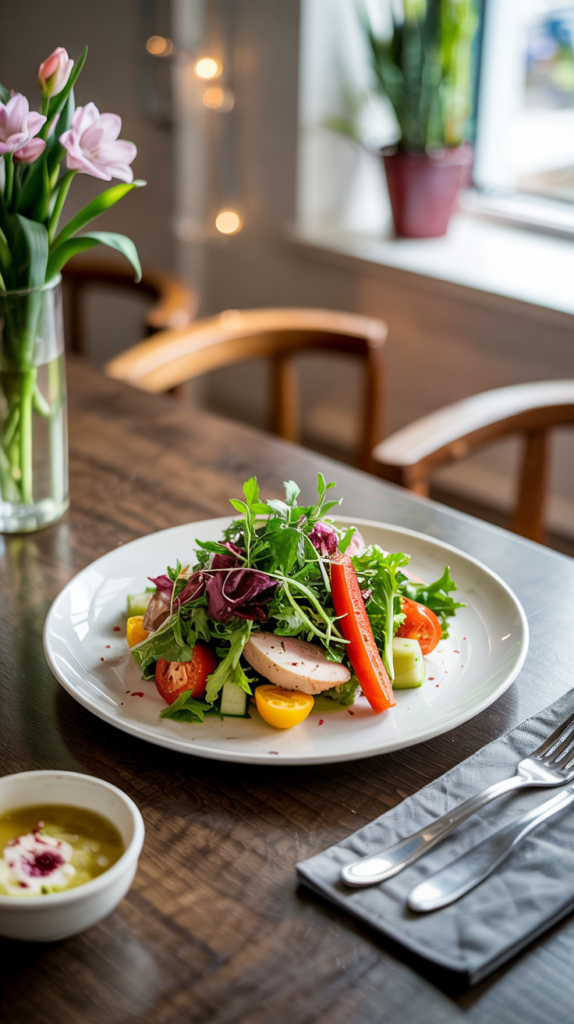
Why Plate Size Matters
Studies have shown that people tend to eat more when served larger portions, even if they’re not hungrier. This is called the portion size effect.
When your plate is big, your mind registers that it isn’t full until you’ve piled on more food. On the other hand, using a smaller plate gives the illusion of abundance, even when the serving size is moderate.
Think of it this way:
- 12-inch plate with a small portion = looks empty → triggers overeating.
- 9-inch plate with the same portion = looks full → satisfies your brain.
This small change in perception can cut hundreds of calories daily without making you feel deprived.
How to Apply This Strategy
- Switch Dinner Plates for Salad Plates: Instead of a 12-inch plate, use 8–9-inch plates for main meals.
- Use Bowls for Veggies, Not Pasta: A deep bowl filled with veggies looks satisfying, while a flat plate of pasta tricks you into taking more.
- Don’t Eat From the Container: Chips, nuts, or ice cream straight from the package encourage mindless overeating. Portion them into a small bowl or plate.
- Color Contrast Helps: Research shows that when food blends into plate color (like pasta on a white plate), people eat more. Choosing contrasting plate colors can reduce overeating.
- Slow Down and Listen to Hunger Cues: Pair smaller plates with slower eating. This gives your body time (about 20 minutes) to register fullness.
Extra Tips for Success
- Fill Half Your Plate with Vegetables: They’re nutrient-dense, high in fiber, and low in calories, making your smaller plate feel full and satisfying.
- Pre-portion Snacks: Instead of grabbing a big bag of chips, portion out a small serving on a smaller dish.
- Train Your Eyes and Stomach Together: Over time, your body adjusts, and smaller portions naturally feel enough.
Bottom line: Shrinking your plate size is a psychological hack that tricks your brain into eating less while still feeling satisfied. Combine it with nutrient-dense foods, and you’ll slim your waistline without the struggle of strict calorie counting.
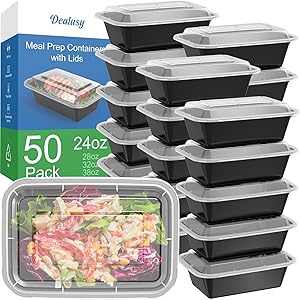
6. Fiber: The Fat-Loss Powerhouse You’re Ignoring
When most people think of fat loss, they immediately focus on cutting carbs, restricting calories, or sweating it out in the gym.
But there’s one nutritional powerhouse often overlooked: fiber.
Adding more fiber to your diet can be one of the most effective, sustainable, and natural ways to burn fat and slim your waistline.
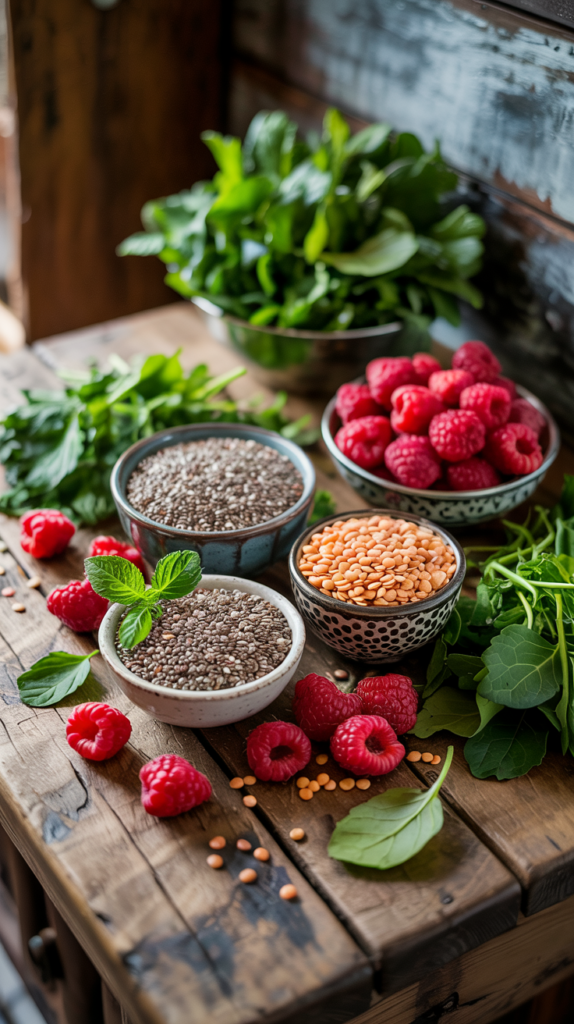
Why Fiber Matters for Fat Loss
Fiber is the part of plant-based foods your body can’t fully digest. Instead of being absorbed like sugars or starches, fiber passes through your digestive system, providing a range of fat-loss benefits:
- Keeps You Full Longer: Fiber adds bulk to your meals, slowing digestion and preventing hunger pangs. This helps reduce unnecessary snacking and overeating.
- Controls Blood Sugar Levels: By slowing the absorption of carbs, fiber prevents sharp blood sugar spikes and crashes that trigger cravings.
- Supports Gut Health: A healthy gut microbiome, fueled by fiber, improves digestion and may even influence fat storage.
- Reduces Belly Fat Risk: Studies link higher fiber intake—especially soluble fiber—with reduced visceral fat, the dangerous fat around your organs.
Types of Fiber and Their Role
- Soluble Fiber: Dissolves in water and forms a gel-like substance in your gut. Great for appetite control and stabilizing blood sugar. Sources include oats, beans, apples, flaxseeds, and carrots.
- Insoluble Fiber: Adds bulk to your stool and keeps digestion regular. Found in foods like whole grains, leafy greens, nuts, and cauliflower.
A balanced mix of both is essential for maximum fat-loss benefits.
Best High-Fiber Foods to Add Daily
- Legumes: Lentils, black beans, chickpeas
- Whole Grains: Oats, quinoa, brown rice, whole wheat bread
- Fruits: Apples, pears, berries, oranges
- Vegetables: Broccoli, spinach, carrots, cauliflower
- Seeds & Nuts: Chia seeds, flaxseeds, almonds
How Much Fiber Do You Need?
- Men: Around 30–38 grams per day
- Women: Around 21–25 grams per day
Most people barely get half of this. That’s why being intentional about fiber can transform your results.
Easy Ways to Boost Fiber Intake
- Start Breakfast with Oats or Chia Pudding.
- Swap White Rice for Quinoa or Brown Rice.
- Snack on Fruit Instead of Processed Sweets.
- Add Vegetables to Every Meal.
- Sprinkle Flax or Chia Seeds into Smoothies.
Bottom line: Fiber is more than just a digestive aid—it’s a fat-loss powerhouse. By keeping you full, balancing blood sugar, and reducing belly fat risk, fiber may be the missing link in your weight-loss journey. Don’t ignore it—start loading your plate with high-fiber foods today.
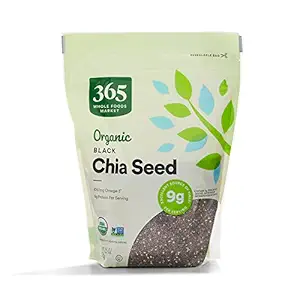
7. Cut Liquid Calories — They Add Up Fast!
If you’ve been eating clean, hitting the gym, and still not seeing your waistline shrink, there’s a sneaky culprit you might be overlooking: liquid calories.
Unlike solid food, drinks don’t fill you up the same way, yet they can quietly pack on hundreds—or even thousands—of calories a week without you noticing.
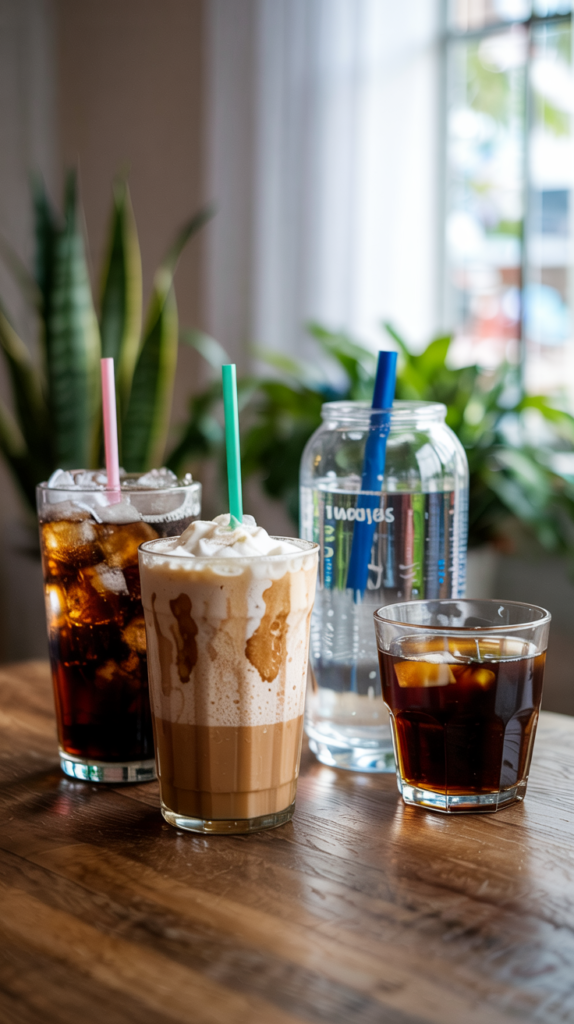
Why Liquid Calories Are a Problem
- They Don’t Satisfy Hunger: Your body doesn’t register drinks the same way it does solid foods, so you end up consuming extra calories without feeling full.
- Hidden Sugars: Sodas, flavored lattes, smoothies, and even “healthy” juices can be loaded with sugar, leading to fat storage and energy crashes.
- Easy to Overconsume: It’s simple to drink a 400-calorie frappuccino in minutes, but much harder to eat 400 calories of chicken breast and broccoli.
Common Sources of Liquid Calories
- Sodas & Soft Drinks: 150–200 calories per can, plus a sugar rush.
- Juices & Smoothies: A “healthy” fruit juice can contain as much sugar as a soda.
- Fancy Coffee Drinks: Lattes, frappuccinos, and mochas can easily exceed 300–500 calories each.
- Alcohol: Beer, wine, and cocktails add empty calories and lower willpower with food choices.
- Energy Drinks & Sweetened Teas: Often marketed as “fitness” drinks but loaded with sugar.
Smarter Hydration Swaps
- Water First: Aim for 2–3 liters a day. It keeps you hydrated, supports metabolism, and helps reduce cravings.
- Infused Water: Add lemon, cucumber, berries, or mint for flavor without calories.
- Black Coffee or Green Tea: Boost metabolism and energy with zero to minimal calories (just don’t load them with cream and sugar).
- Sparkling Water: Great soda alternative if you crave fizz.
- Protein Shakes (Smartly Made): When made with unsweetened almond milk, whey, or plant protein and some fruit, they can be a nutritious, muscle-friendly option.
Extra Tips to Cut Down
- Set Limits on Alcohol: Stick to 1–2 drinks max on social occasions and choose lighter options like vodka soda or dry wine.
- Watch “Healthy” Smoothies: Always check sugar content or make your own with whole fruits and veggies.
- Be Mindful at Coffee Shops: Choose black coffee, Americano, or cappuccino over sugar-loaded creations.
Bottom line: liquid calories are diet killers because they sneak in without making you full. Swap sugary drinks for water, tea, or black coffee, and you’ll see fat loss results much faster—without feeling deprived.
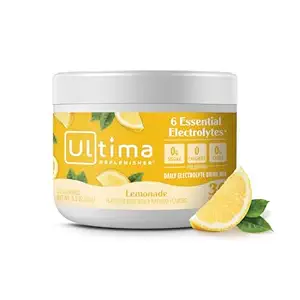
8. Prep Your Meals to Win Your Week
One of the biggest obstacles to fat loss isn’t lack of willpower—it’s lack of preparation. When you’re hungry, busy, or stressed, you’re far more likely to grab the easiest option, which usually means fast food, processed snacks, or oversized portions.
That’s where meal prepping comes in. By planning and preparing your meals ahead of time, you take control of your nutrition and set yourself up for consistent fat-loss success.
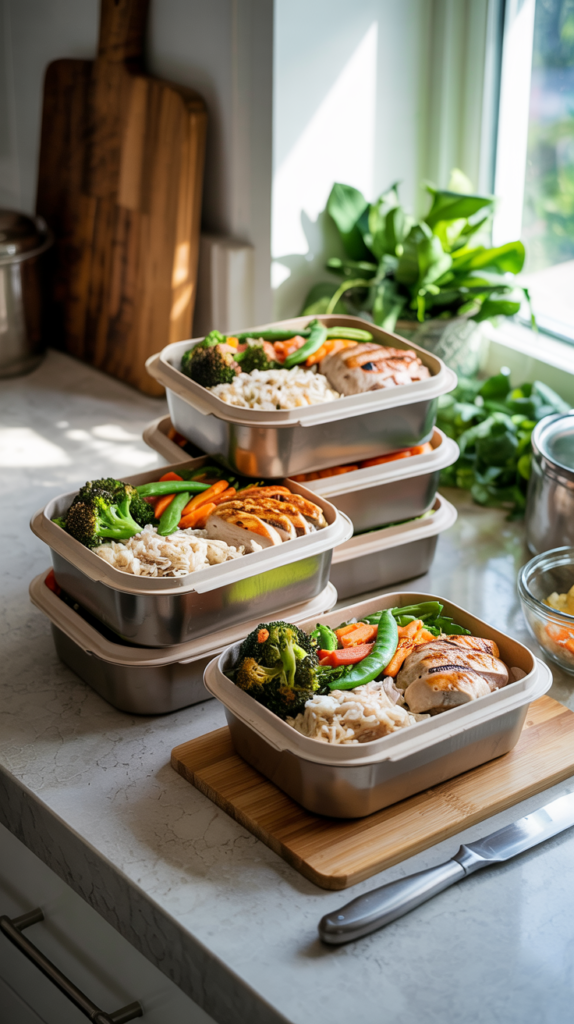
Why Meal Prepping Works
- Eliminates Last-Minute Decisions: No more wondering, “What should I eat?” when you’re starving.
- Keeps Calories in Check: Pre-portioned meals prevent overeating and make it easier to track what you eat.
- Saves Time & Money: Cooking in bulk is cheaper than eating out, and it cuts down on wasted minutes throughout the week.
- Reduces Temptation: If healthy meals are ready in the fridge, you’re less likely to reach for junk food.
- Builds Consistency: Fat loss isn’t about perfection; it’s about repeating the right habits day after day. Meal prep makes that possible.
How to Start Meal Prepping
- Pick a Day: Most people choose Sunday or Monday to prep for the week ahead.
- Choose 2–3 Protein Sources: Examples: chicken breast, salmon, lean beef, tofu, eggs.
- Add Complex Carbs: Brown rice, quinoa, sweet potatoes, or oats.
- Load Up on Veggies: Broccoli, spinach, peppers, zucchini, or mixed greens.
- Healthy Fats in Moderation: Avocado, olive oil, nuts, or chia seeds.
- Pack in Containers: Divide meals into individual containers so they’re grab-and-go.
Meal Prep Tips for Fat Loss
- Portion with Purpose: Use smaller containers for snacks, medium ones for lunch, and larger ones for dinner.
- Mix Flavors & Spices: Avoid boredom by seasoning differently—think garlic and herbs one day, teriyaki another.
- Batch Cook Smartly: Bake or grill proteins in bulk, steam a big tray of veggies, and cook grains ahead of time.
- Include Quick Options: Keep hard-boiled eggs, Greek yogurt, and fruit prepped for easy snacks.
- Prep Snacks Too: If you only prep main meals, snacks can derail you. Portion out almonds, carrot sticks, or hummus cups.
Example Fat-Loss Meal Prep Day
- Breakfast: Overnight oats with chia seeds, berries, and protein powder.
- Snack: Greek yogurt with almonds.
- Lunch: Grilled chicken, quinoa, and roasted broccoli.
- Snack: Apple slices with almond butter.
- Dinner: Salmon, sweet potato, and spinach salad.
Bottom line: Meal prepping is your fat-loss insurance policy. By removing decision fatigue, keeping portions under control, and always having healthy options ready, you give yourself the best chance to stay consistent and slim your waistline over time.
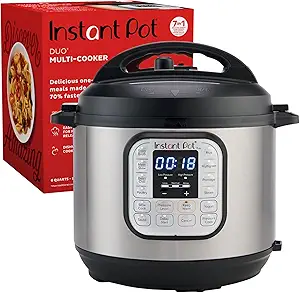
9. Balance Your Breakfast with Protein + Healthy Fats
Breakfast sets the tone for your entire day. If you start with a sugar-loaded pastry or cereal, your blood sugar will spike, crash, and leave you craving more snacks by mid-morning.
But if you balance your breakfast with protein and healthy fats, you’ll feel satisfied, energized, and far less likely to overeat later.
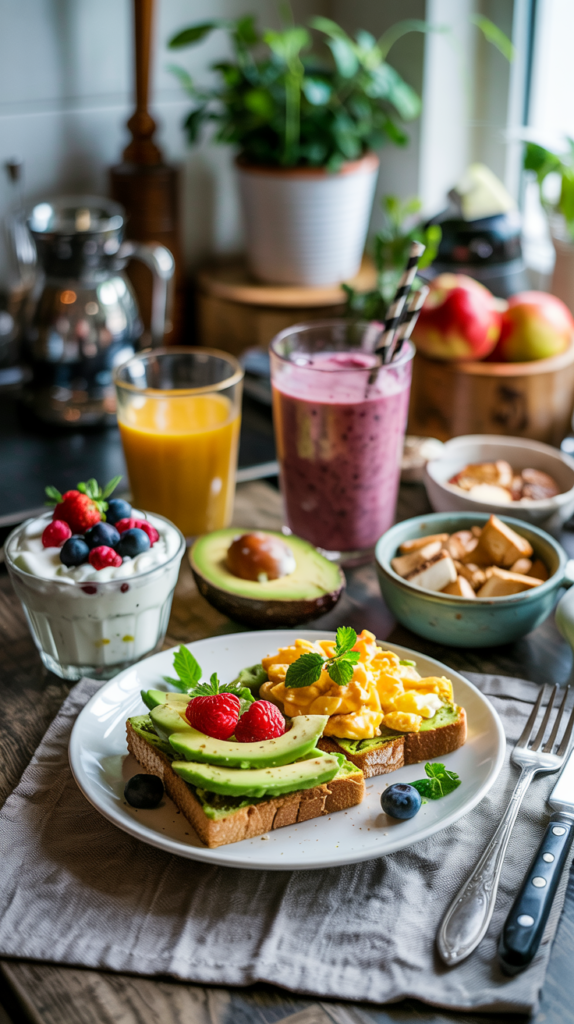
Why Protein + Healthy Fats Work So Well
- Keeps You Full Longer: Protein slows digestion, while fats provide satiety—together, they prevent hunger pangs.
- Stable Energy Levels: Unlike high-carb-only breakfasts, this combo prevents blood sugar crashes that lead to cravings.
- Supports Muscle Growth & Fat Loss: Protein helps repair and build lean muscle, while fats support hormone balance (like testosterone and estrogen) crucial for fat loss.
- Curbs Cravings: A balanced breakfast reduces the urge to snack on sugary foods mid-morning.
Best Breakfast Protein Sources
- Eggs (scrambled, boiled, or omelet)
- Greek yogurt or cottage cheese
- Protein shakes (whey or plant-based)
- Smoked salmon or lean turkey slices
- Tofu scramble
Healthy Fat Options to Pair With
- Avocado (on toast, in smoothies, or sliced on the side)
- Nut butters (almond, peanut, cashew—natural and unsweetened)
- Chia seeds or flaxseeds (great in oats or smoothies)
- Olive oil (drizzled over eggs or veggies)
- Nuts like almonds, walnuts, or pecans
Example Balanced Breakfasts
- Option 1: Scrambled eggs with avocado and sautéed spinach
- Option 2: Greek yogurt with chia seeds, berries, and a spoon of almond butter
- Option 3: Protein shake blended with spinach, banana, and flaxseed
- Option 4: Smoked salmon on whole-grain toast with cream cheese and cucumber
- Option 5: Cottage cheese with walnuts and blueberries
Pro Tips
- Don’t Skip Breakfast If Hungry: While intermittent fasting can work for some, if you wake up hungry, fuel your body with protein and fats rather than sugary carbs.
- Add Some Carbs if Needed: For workout days, add a moderate amount of carbs like oats or fruit for extra fuel.
- Meal Prep Ahead: Hard-boil eggs, portion out yogurt, or prep smoothie bags to save time in the morning.
Bottom line: A breakfast rich in protein and healthy fats helps you control hunger, maintain energy, and create the perfect foundation for fat loss and a stronger body. Skip the sugar rush—start your day with fuel that works for you.
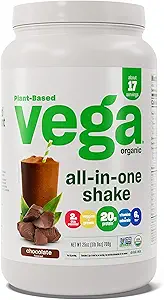
10. Embrace Healthy Fats for Faster Fat Los
For years, fats were unfairly demonized as the enemy of weight loss. The truth? Healthy fats are your secret weapon when it comes to burning fat, stabilizing energy, and keeping cravings under control. The key is choosing the right types of fat in the right amounts.
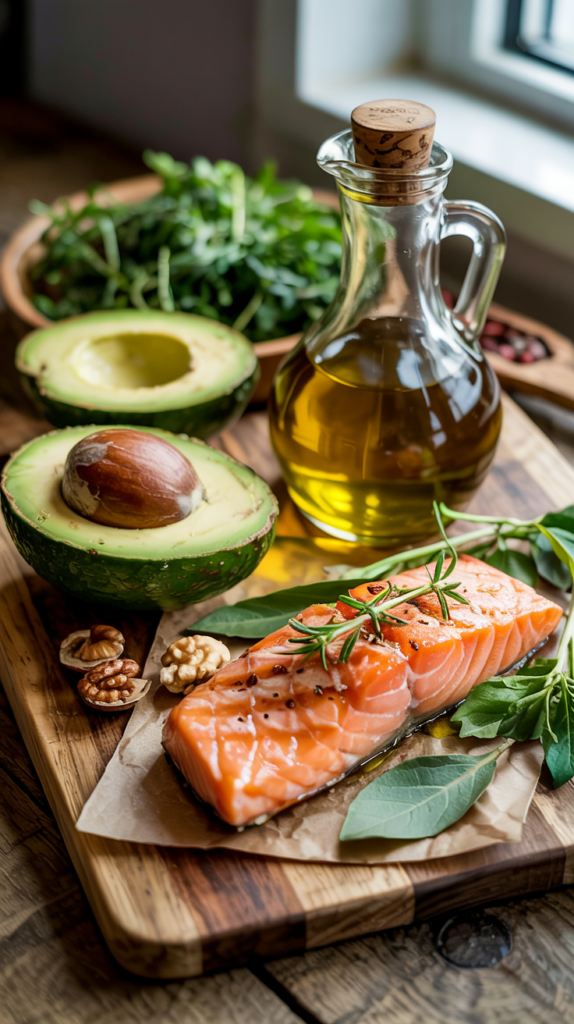
Healthy fats—such as those found in avocados, nuts, seeds, olive oil, fatty fish, and coconut oil—do much more than provide calories. They:
- Boost satiety: Fat slows digestion, helping you stay fuller for longer. That means fewer cravings for processed snacks and sugary treats.
- Stabilize blood sugar: Pairing healthy fats with carbs helps prevent energy crashes and insulin spikes that can lead to fat storage.
- Support fat metabolism: Ironically, eating the right fats signals your body to burn stored fat for fuel.
- Fuel hormones: Fats play a critical role in producing hormones like testosterone, estrogen, and leptin—all of which regulate metabolism and weight control.
How to Add Healthy Fats the Right Way
- Avocados – Spread on toast, add to salads, or blend into smoothies. One-half avocado adds fiber, potassium, and healthy monounsaturated fat.
- Nuts & Seeds – Keep almonds, walnuts, chia seeds, or flaxseeds on hand for quick snacks or sprinkle on yogurt and oatmeal. Stick to a small handful (about 1 ounce) since they’re calorie-dense.
- Olive Oil – Use as your go-to salad dressing base or drizzle lightly over roasted veggies instead of heavy sauces.
- Fatty Fish – Salmon, sardines, and mackerel provide omega-3 fatty acids, which fight inflammation and support heart health. Aim for 2–3 servings per week.
- Coconut Oil – Great for cooking at medium heat or adding to smoothies for a quick energy boost.
Best Times to Eat Healthy Fats for Fat Loss
- At breakfast: Adding avocado, eggs, or nut butter sets you up for steady energy and fewer cravings mid-morning.
- With lunch or dinner: A drizzle of olive oil on veggies or salmon with greens balances your plate.
- As snacks: Nuts, Greek yogurt with seeds, or hummus with veggies keep hunger away without spiking insulin.
Pro Tip: Don’t overdo fats. Even healthy fats are calorie-dense, so measure with intention. A thumb-sized serving of oils, a handful of nuts, or half an avocado is usually enough per meal.
By embracing healthy fats instead of avoiding them, you’ll fuel your body smarter, stay satisfied longer, and encourage your metabolism to tap into stored fat.
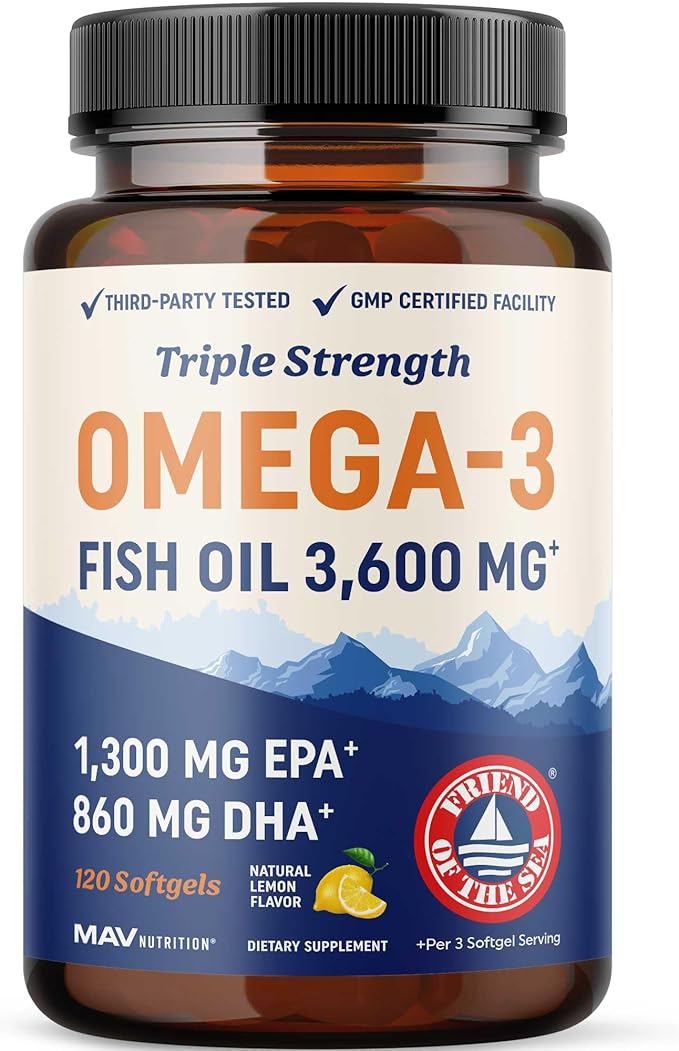
11. Use Intermittent Fasting Smartl
Intermittent fasting (IF) has become one of the most popular fat-loss strategies—and for good reason.
Done correctly, it’s not just about skipping meals; it’s about training your body to use energy more efficiently, improve hormone balance, and burn fat instead of storing it.
The key, however, is to use intermittent fasting smartly—not as an excuse to under-eat or binge.
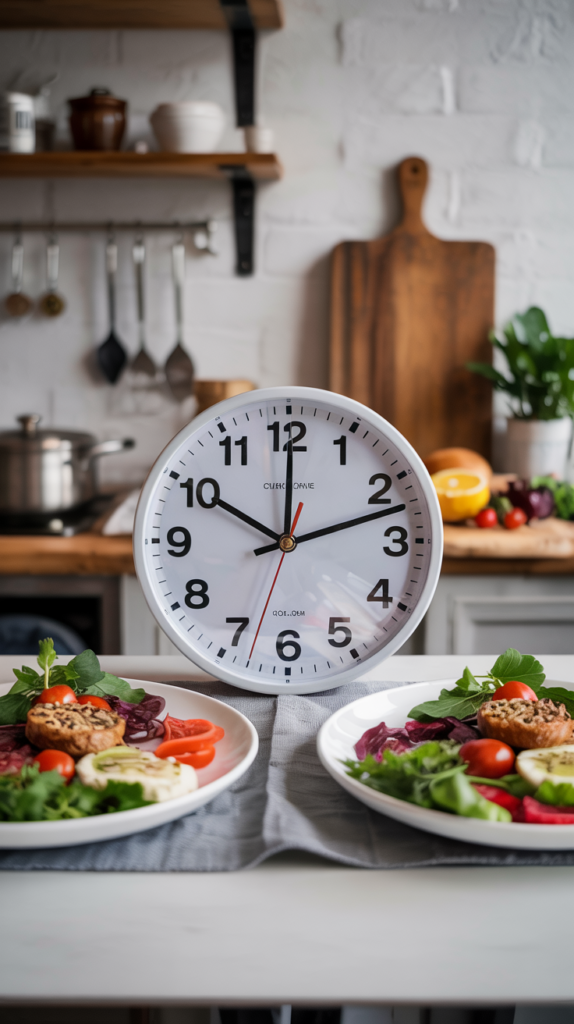
Why Intermittent Fasting Works
When you eat, your body uses glucose (from carbs) as its main source of fuel. But when you go several hours without food, insulin levels drop, and your body begins to burn stored fat for energy. IF takes advantage of this natural process by extending the time your body spends in fat-burning mode.
Other benefits include:
- Improved insulin sensitivity – Helping your body manage carbs more effectively.
- Reduced cravings – Many people find hunger decreases once the body adapts.
- Better focus & energy – Without constant blood sugar spikes and crashes, mental clarity improves.
- Supports longevity – Studies suggest fasting may improve cellular repair and slow aging.
Different Approaches to Intermittent Fasting
- 16/8 Method – Fast for 16 hours, eat within an 8-hour window (e.g., 12 p.m.–8 p.m.). This is the most common and sustainable method.
- 14/10 Method – Similar, but with a slightly longer eating window—great for beginners.
- 5:2 Method – Eat normally for 5 days, then restrict calories to around 500–600 for 2 days.
- Alternate Day Fasting – Eating normally one day and fasting (or eating very little) the next. Best for advanced fasters.
How to Use IF for Fat Loss Without Burning Out
- Start gradually – Don’t jump into 20-hour fasts right away. Begin with 12 hours, then build up.
- Stay hydrated – Drink plenty of water, herbal teas, or black coffee during your fasting window.
- Break your fast wisely – Start with protein and healthy fats (like eggs, salmon, or Greek yogurt) instead of sugary foods that spike insulin.
- Time it around workouts – If you train in the morning, you might prefer a shorter fast. If you train later, breaking your fast post-workout can help with recovery.
- Listen to your body – IF isn’t for everyone. If you feel overly fatigued, dizzy, or experience hormonal issues, it may not be the right strategy for you.
Sample 16/8 Schedule
- 8 a.m.–12 p.m. (fasting): Water, black coffee, or tea.
- 12 p.m. (first meal): Grilled chicken salad with olive oil and avocado.
- 4 p.m. (snack): Greek yogurt with chia seeds.
- 7:30 p.m. (dinner): Salmon, quinoa, and roasted vegetables.
- 8 p.m.–8 a.m. (fasting): Only water or zero-calorie drinks.
Pro Tip: Intermittent fasting isn’t about eating less food overall—it’s about eating within a structured window. You still need balanced meals with protein, healthy fats, and fiber-rich carbs to keep your metabolism strong and prevent muscle loss.
By using intermittent fasting smartly, you can tap into your body’s natural fat-burning cycles while maintaining energy, focus, and long-term sustainability.
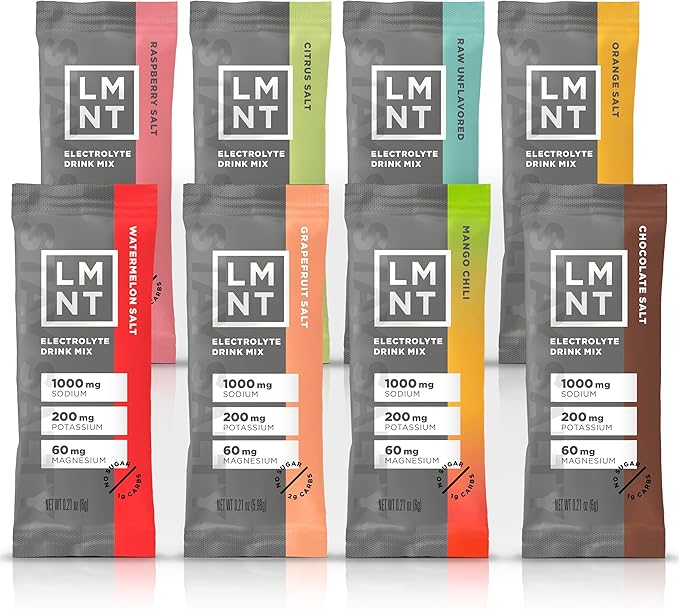
12. Manage Stress to Reduce Emotional Eating
One of the most overlooked reasons people struggle to lose belly fat isn’t just what’s on their plate—it’s what’s on their mind. Stress has a powerful effect on your hormones, appetite, and overall eating habits.
When you’re under chronic stress, your body produces cortisol, a hormone that can lead to increased fat storage around the midsection and stronger cravings for high-calorie, sugary, or salty foods.
This is why managing stress is not just about mental health—it’s a direct tool for fat loss.

How Stress Leads to Belly Fat
- Hormonal shifts: Elevated cortisol levels signal your body to hold onto energy stores, often as stubborn belly fat.
- Increased appetite: Stress can drive emotional eating, making you crave “comfort foods” that provide temporary relief but long-term weight gain.
- Poor sleep: Stress often disrupts sleep, and inadequate rest lowers metabolism, raises hunger hormones (ghrelin), and lowers satiety hormones (leptin).
- Mindless eating: When stressed, many people eat quickly and unconsciously, consuming far more calories than they realize.
Smart Strategies to Manage Stress
- Practice mindful eating – Slow down, chew your food well, and recognize hunger vs. emotional cravings. Ask yourself: “Am I really hungry, or just stressed?”
- Move your body daily – Exercise is one of the best natural stress relievers. Even a 20-minute walk can lower cortisol and release endorphins.
- Try relaxation techniques – Meditation, yoga, or deep breathing for just 5–10 minutes a day can calm your nervous system.
- Keep a journal – Writing down your thoughts can help you process stress instead of turning to food for comfort.
- Avoid stress triggers when possible – Sometimes, reducing exposure to certain environments, social media, or toxic people can drastically lower stress levels.
- Create a wind-down routine before bed – No screens an hour before sleep, stretch lightly, sip herbal tea, or read a book to help your body relax.
Healthier Alternatives to Stress Eating
- Swap chips or sweets for carrot sticks with hummus or air-popped popcorn.
- Instead of soda or alcohol, reach for sparkling water with lemon.
- Replace ice cream with Greek yogurt topped with berries for a protein-rich, satisfying treat.
Pro Tip: Build Awareness
The next time you feel a craving hit, pause and ask yourself:
- “Am I hungry, or am I trying to soothe stress?”
- If it’s stress, try drinking water, taking a walk, or practicing deep breathing before eating.
Bottom line: Managing stress isn’t about eliminating it completely—it’s about learning to respond in healthier ways.
By controlling stress, you lower cortisol, reduce emotional eating, and make fat loss—especially belly fat—much easier.
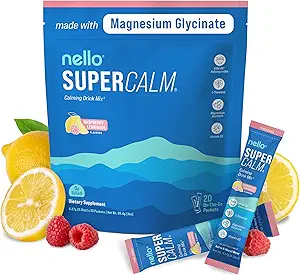
Frequently Asked Questions (FAQs)
1. What is the best diet for losing belly fat?
There isn’t a one-size-fits-all diet, but the most effective plans share similar principles: eating whole, nutrient-dense foods, prioritizing lean protein, reducing processed carbs and sugars, and maintaining a calorie deficit. Diets like the Mediterranean diet, high-protein diet, and low-carb approaches have all been shown to support belly fat loss when followed consistently.
2. How long does it take to see results in belly fat reduction?
This depends on your starting point, consistency, and lifestyle factors. On average, people notice visible changes in 4–8 weeks with proper nutrition, exercise, sleep, and stress management. Remember, spot reduction is a myth—you’ll lose fat from your entire body, and belly fat is often the last to go.
3. Can I lose belly fat without exercising?
Yes, diet plays the largest role in fat loss. However, combining a proper diet with strength training and cardio speeds up results, preserves lean muscle, and keeps your metabolism high. Exercise also helps with stress management, which indirectly reduces belly fat storage.
4. Do I need to cut out carbs to get a flat stomach?
No. Carbs are not the enemy. Whole-food carbs like brown rice, quinoa, oats, sweet potatoes, and fruits provide essential energy for workouts and recovery. The key is timing and portion control—try eating more carbs around workouts and fewer late at night if your goal is fat loss.
5. What role does stress play in belly fat?
Chronic stress raises cortisol, a hormone that promotes belly fat storage and increases cravings. Managing stress through exercise, meditation, quality sleep, and mindful eating can dramatically improve fat-loss results.
6. Are supplements necessary for losing belly fat?
Supplements are not required but can help fill nutritional gaps. Some helpful options include:
- Whey or plant protein powders for meeting daily protein needs
- Omega-3s (fish oil or algae oil) for inflammation and fat metabolism
- Probiotics for gut health, which affects weight regulation
- Green tea extract or caffeine for a mild metabolism boost
7. How much water should I drink to help with fat loss?
Aim for at least 8–10 cups (2–2.5 liters) daily, but this varies by body size, activity level, and climate. Starting your morning with water, sipping throughout the day, and hydrating before meals can reduce overeating and support fat metabolism.
8. What’s the biggest mistake people make when trying to lose belly fat?
Some of the most common mistakes include:
Not managing stress and sleep, which sabotages fat loss efforts
Over-restricting calories (which slows metabolism)
Relying too much on cardio without strength training
Drinking calories (sodas, juices, alcohol, fancy coffee drinks)
Final Thoughts
Losing belly fat isn’t about quick fixes, miracle diets, or extreme restrictions—it’s about building small, consistent habits that add up to big results over time.
By prioritizing lean protein, staying hydrated, managing stress, getting quality sleep, and fueling your body with whole foods, you create a lifestyle that naturally supports fat loss while keeping your energy and health at their peak.
Remember, belly fat is often the last to go, so patience and consistency are key. Don’t chase overnight results—instead, focus on sustainable strategies you can stick to for months and years.
Combine smart nutrition with strength training, cardio, and recovery, and you’ll not only slim your waistline but also build a stronger, healthier version of yourself.

